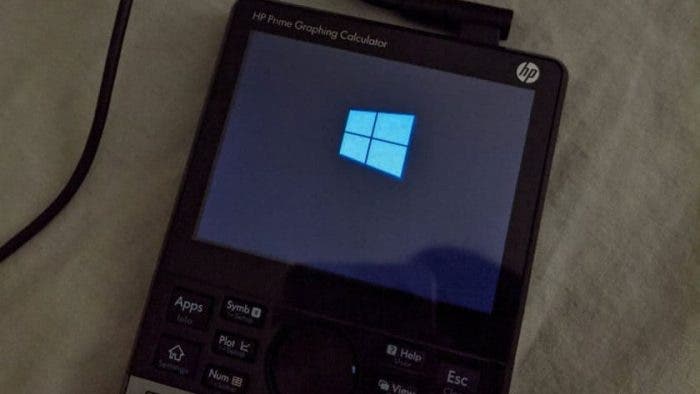The version of Windows 10 optimized for ARM processors has opened the field of possibilities and continues to stimulate the creativity of some developers who are trying things that were still unimaginable a few years ago. This is how the OS was installed on the Raspberry Pi. A hacker has also succeeded in replacing Android by Windows 10 on the OnePlus 6T. But, do you believe that it’s possible to install it on a calculator? Well, a developer named Ben (@imbushuo on Twitter) had the crazy idea to try the adventure.
The calculator that is the subject of this hack is an HP Prime Graphing Calculator. As its name suggests, it is a more advanced graphing calculator than a conventional scientific calculator. However, there are still many obstacles.
This hacker managed to run Windows 10 IoT Core on a calculator
According to Ben, the calculator was hacked to install Windows 10 IoT Core, a version of the OS that is a clear expression of Microsoft’s desire to make its system multi-platform. This edition can work on small objects with or without a display like connected thermostats, Smart Hubs, connected locks, etc.
And that is how bootmgfw standard(modern) boot menu behaves in a 320*240 screen pic.twitter.com/OvuHvG7Od1
— Sunshine Biscuit at scale (@imbushuo) November 6, 2019
After successfully installing Windows 10 on his calculator, Ben explains that a first attempt to launch the system resulted in a failure whose cause was impossible to diagnose at first. The screen of 320 x 240 px was indeed too small to display the error code in its entirety.
Better pic.twitter.com/inamJSGDZD
— Sunshine Biscuit at scale (@imbushuo) November 8, 2019
With some hacks later, the obstacle was crossed and the developer managed to access the Boot Manager of Windows 10. He did not reveal the technical details of this feat yet. But we are curious to see how the OS behaves on a calculator with only 256MB of RAM. For this, we will have to be a little patient since the stage of the boot manager is the last that Ben has published on his Twitter account. The project is still ongoing and we will certainly know more about its progress in the days to come.




